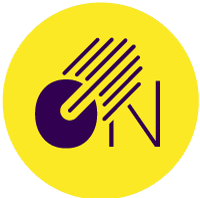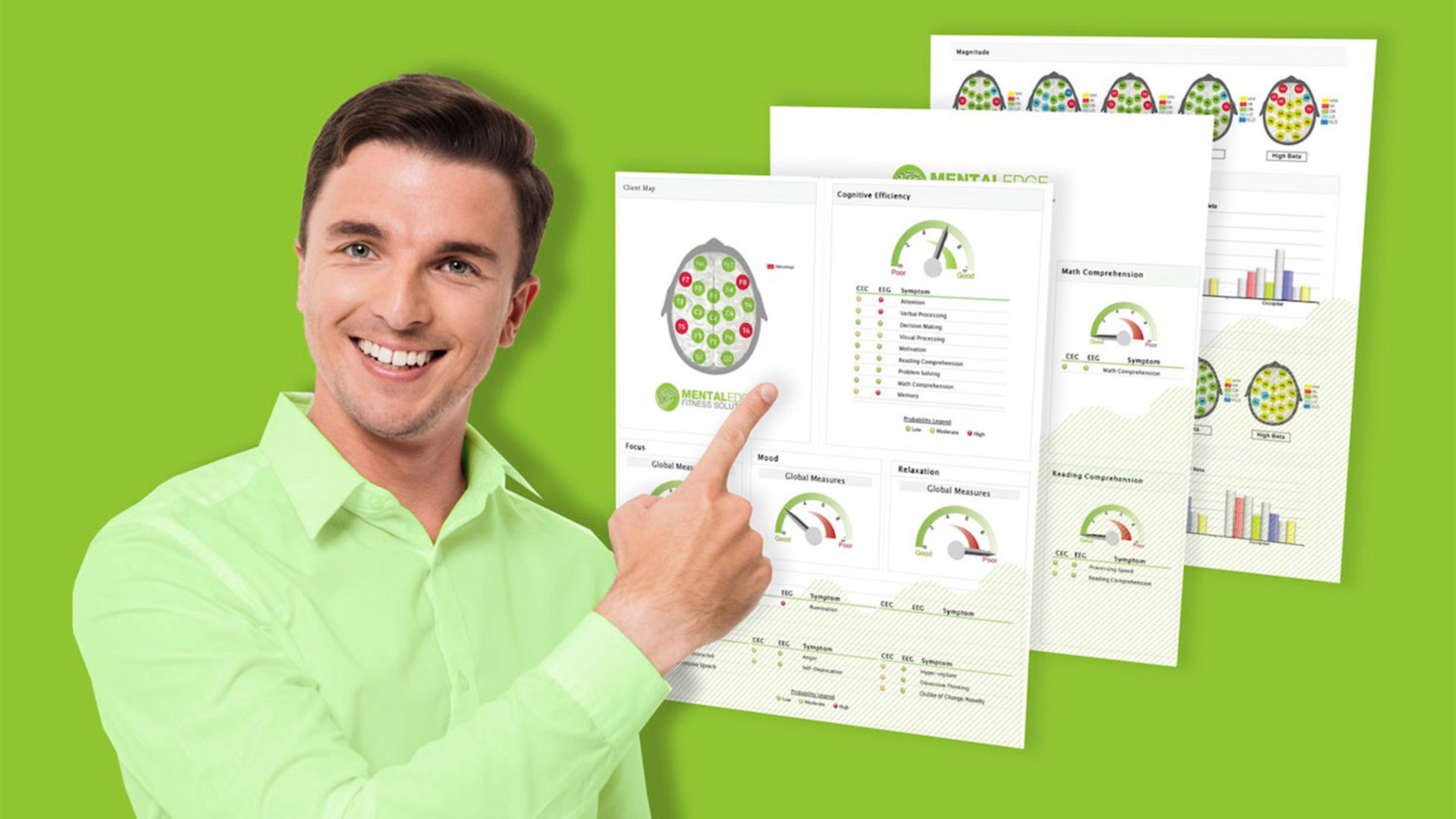What Is qEEG?
qEEG refers to the analysis of digitized EEG, or popularly known as “Brain Mapping.” The qEEG extends the analysis of EEG interpretation, and this helps in gaining a better understanding of EEG and brain function. qEEG is nothing but a procedure processing recorded EEG activity measured from a multi-electrode recording employing a computer. Various algorithms like the “Fourier” or “Wavelet” analyze this multi-channel EEG data. Statistical analysis of the digital data is a vital process of qEEG.
Color maps of brain functioning arising out this processed EEG are called “brain maps.” The EEG itself and the derived qEEG data are interpreted and serve as clinical tools for evaluating brain function. Moreover, changes in brain function are trackable via applications like neurofeedback. The qEEG or brain mapping processing techniques and modern analytic software help critique the dynamic changes occurring in the brain (when engaged in cognitive processing tasks). The efficient and engaged areas of the brain are identified using this novel approach.
What Is Biofeedback?
Biofeedback is a technique enabling the control of a few body functions like the heart rate, breathing, body temperature, brain waves and muscle tension. During biofeedback, sensors are placed on various parts of your body, that monitors, receives and analyzes information about the body. This feedback helps make subtle changes in the body like relaxing specific muscles for the purposes of reducing pain or tension or assisting you in gaining control over your breathing for the purposes of reducing stress or anxiety.
Overall, biofeedback helps practice new methods to control the body and brain, aimed at improving your overall health or a chronic condition, or even mental performance.
What Is Neurofeedback?
Neurofeedback is a type of biofeedback for the brain. It is a straightforward method of brain function training. Through neurofeedback, the brain learns new ways to function more efficiently.
Neurofeedback practitioners observe instantaneous brain activity and feedback this information to the person. When the brain enters an optimum state, a reward in the form of a movie or a video game (on a screen) greets the brain.
Similarly, when the brain goes off course and enters an undesirable state, the reward vanishes. This entire reward loop is a gradual learning process, and over time, the brain can enter these high-performance states more frequently, thus heightening mental performance and improving overall mental health and wellness.
Neurofeedback training can strengthen the brain through a phenomenon called neuroplasticity. This is quite similar to how the muscles of the body gain strength upon exercising. Neurofeedback is also referred to as EEG Biofeedback as it’s based on electrical brain activity or EEG.
Neurofeedback helps with issues arising out of brain dysregulation. Anxiety-depression spectrum, various sleep disorders, attention deficit disorders, migraines, etc. are amongst problems caused by brain dysregulation.
Neurofeedback: A Practical Example
Consider that Jack has trouble falling asleep. His concentration falters during the day, and he finds it challenging to keep his emotions at bay. Neurofeedback practitioners would start with a review his case and a baseline assessment known as a qEEG brain map.
A qeeG brain map – ‘Q’ for short enables practitioners to view a person’s unique set of mental weaknesses and strengths – brain areas corresponding to too little or too much activity. Moreover, areas of the brain not performing their operations to the best possible limits are also assessed.
Brain mapping helps understand how each part of the brain functions in a variety of conditions. Such precise measurement of brain waves helps identify optimal performing areas of the brain and those areas that have scope for improvement.
The bottom line is that qEEG is a guide to determine the most effective and efficient way for brain training to achieve specific goals like increased focus and attention, better memory, decreased anxiety, and peak mental performance.
Upon recording the qEEG map for Jack, neurotherapists can figure out that his brain is on high alert, all the time. Additionally, they also notice that the areas of the brain responsible for anxiety and emotional reactivity are performing at three times the ideal rate. That’s an apparent reason why Jack can’t get his mind to rest.
The analysis
After analysis of his brain activity, they conclude that this anxiety affects his ability to enter into a peaceful state of mind. The anxiety is using up all his mental resources and leaving none for concentration and decisiveness.
Now that the areas of concern are identified, the practitioners create a particular neurofeedback training plan for Jack. Jack enjoys games, movies and music, so he has several choices of feedback that would serve as the perfect reward during his neurofeedback sessions. Jack chooses the movie, Inception.
During the sessions, when Jack’s brain enters a restful state, a scene from Inception begins to play. A positive signal indicating that his brain is headed the right way. However, when his brain enters an anxious state, the movie fades away, thus indicating a negative signal.
After a few sessions, Jack can make these state shifts by himself, without any external aid. Now, he has greater control over his emotional reactions and can make choices that help him rest faster and easier.
Similarly, neurofeedback can help CEOs, athletes, public speakers, etc. improve their mental performance, and consequently improve their effectiveness at whatever it is that they specialize in.
Importance of a qEEG Before Neurofeedback
Several practitioners skip the qEEG before neurofeedback sessions. However, the industry is rapidly evolving towards making qEEG mandatory before neurofeedback. There are arguments against qEEG, claiming that it is just another way to bill clients extra.
However, there is also mounting evidence regarding the positive treatment impact arising from qEEG usage. Research concludes that qEEG usage helped double clinical success from 30-60%. Furthermore, the overall treatment benefits (‘full’ benefit and ‘some benefit’ groups summed together) increased from a previous 80% to 90%.
The cost-effectiveness as the qEEG does improve the probability of success. Since clients are going to shell out hundreds of dollars for an average neurofeedback session, if practitioners can create a qEEG map, the entire process becomes all the more effective.
Conclusion
The qEEG adds a crucial layer of analytics to the already sophisticated technology of EEG. Consequently, applications like neurofeedback can be carried out with greater precision to heighten mental performance to the maximum extent.
References
https://mentaledge-fitness.com
https://brainworksneurotherapy.com/what-is-neurofeedback
https://www.mayoclinic.org/tests-procedures/biofeedback/about/pac-20384664
https://www.theatlantic.com/health/archive/2017/06/this-is-your-brain-on-qeeg/532035/





